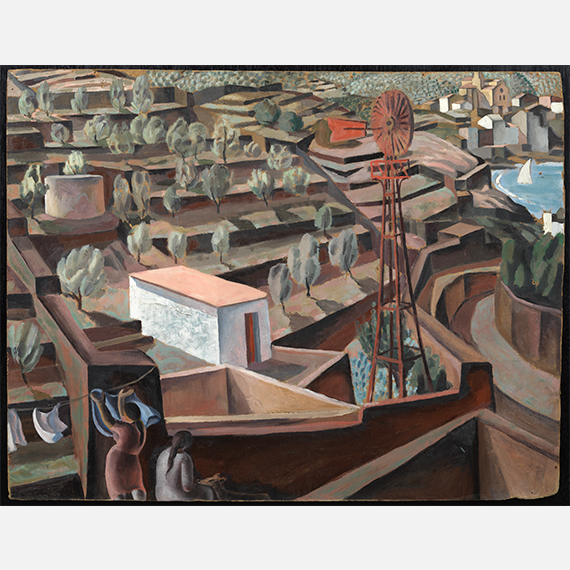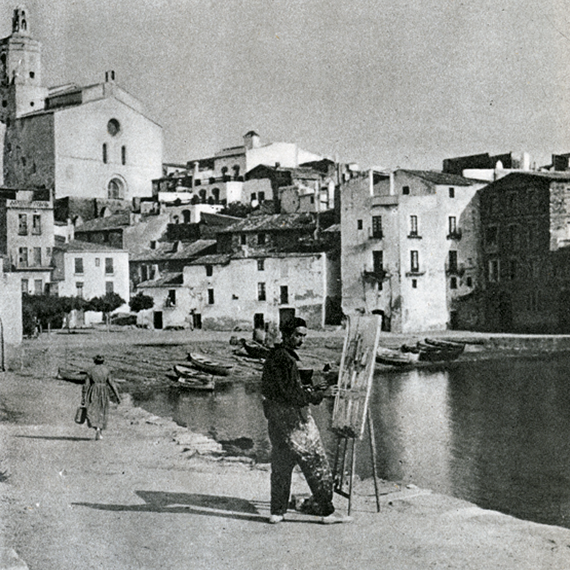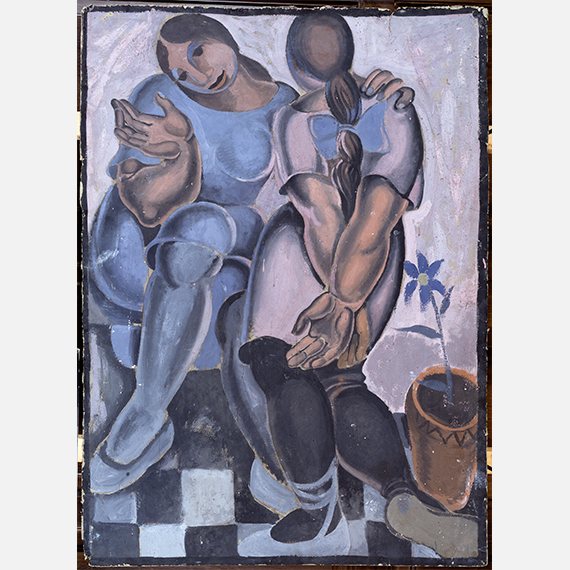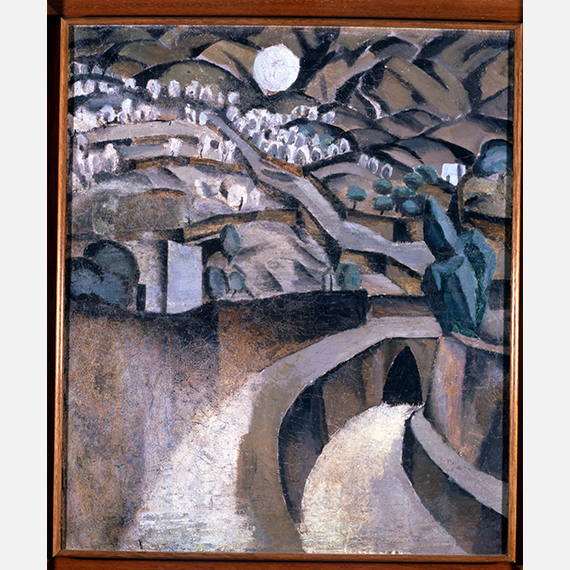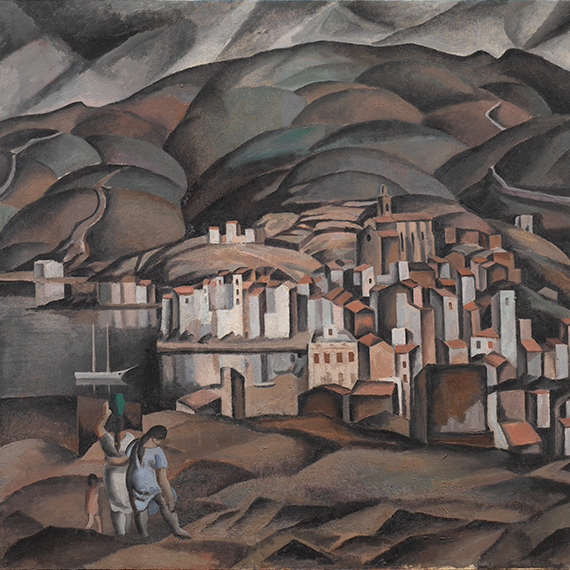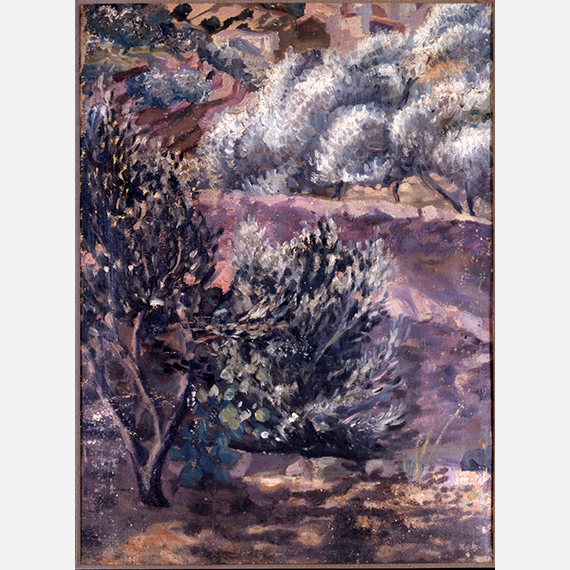The exhibition
Gala Dalí Castle in Púbol reopens its doors this year with the presentation of the latest work acquired by the Fundació Gala-Salvador Dalí: The Mill. Cadaqués Landscape, c. 1923.
This painting reveals a Dalí who was searching for his own style and constantly experimenting; a Dalí once again focused on the landscape, a recurring theme throughout his career, seen, on this occasion, from inside.
This little-known work was displayed for the first time during the anthological exhibitions organised to celebrate the centenary of the artist’s birth, and it now forms part of the Fundació Gala-Salvador Dalí’s important collection of works from the artist’s early period.
The Mill. Cadaqués Landscape, c. 1923
The Mill. Cadaqués Landscape is a representative example of the young Dalí’s pictures of Cadaqués, the result of his constant experimentation and a mix and convergence of artistic styles, notable for the presence of an early Cubism, the superimposition of images, and a sober palette reminiscent of Juan Gris. During this period, Dalí was painting from nature but evolving towards Impressionism, certain elements of Pointillism, Fauvism, Futurism, Purism and Vibrationism to arrive here at an incipient Cubism. The impression the landscape made on him from a very early age, and which he never forgot no matter how much time he spent away from it, is the great subject of this painting. A landscape that determined him, configured him and enabled him to express his feelings and his artistic concerns his whole life long.
That Dalí had an unconditional, all but obsessive love of his landscape is well known. He lived in it, he theorized it, he painted it. As Josep Pla, who was also from the Empordà, wrote:
‘The discovery of the landscape of the Alt Empordà, which has been, is and will be the obsession of his life […] He carries it through the world with an inexhaustible persistence because he holds it in his memory with an almost painful – and delicious – obsessive precision.’
Josep Pla, Homenots. Quarta sèrie. En Obra completa, vol. 29, Destino, Barcelona, 1975, p. 173 y 175.
SEE TECHNICAL DATA OF THIS WORKVideo
“I believe that the personality of the artist develops and asserts itself through the struggles it has to undergo.” Henri Matisse
J. Subias, ‘Salvador Dalí’, Alfar, La Coruña, May 1924, p. 15

